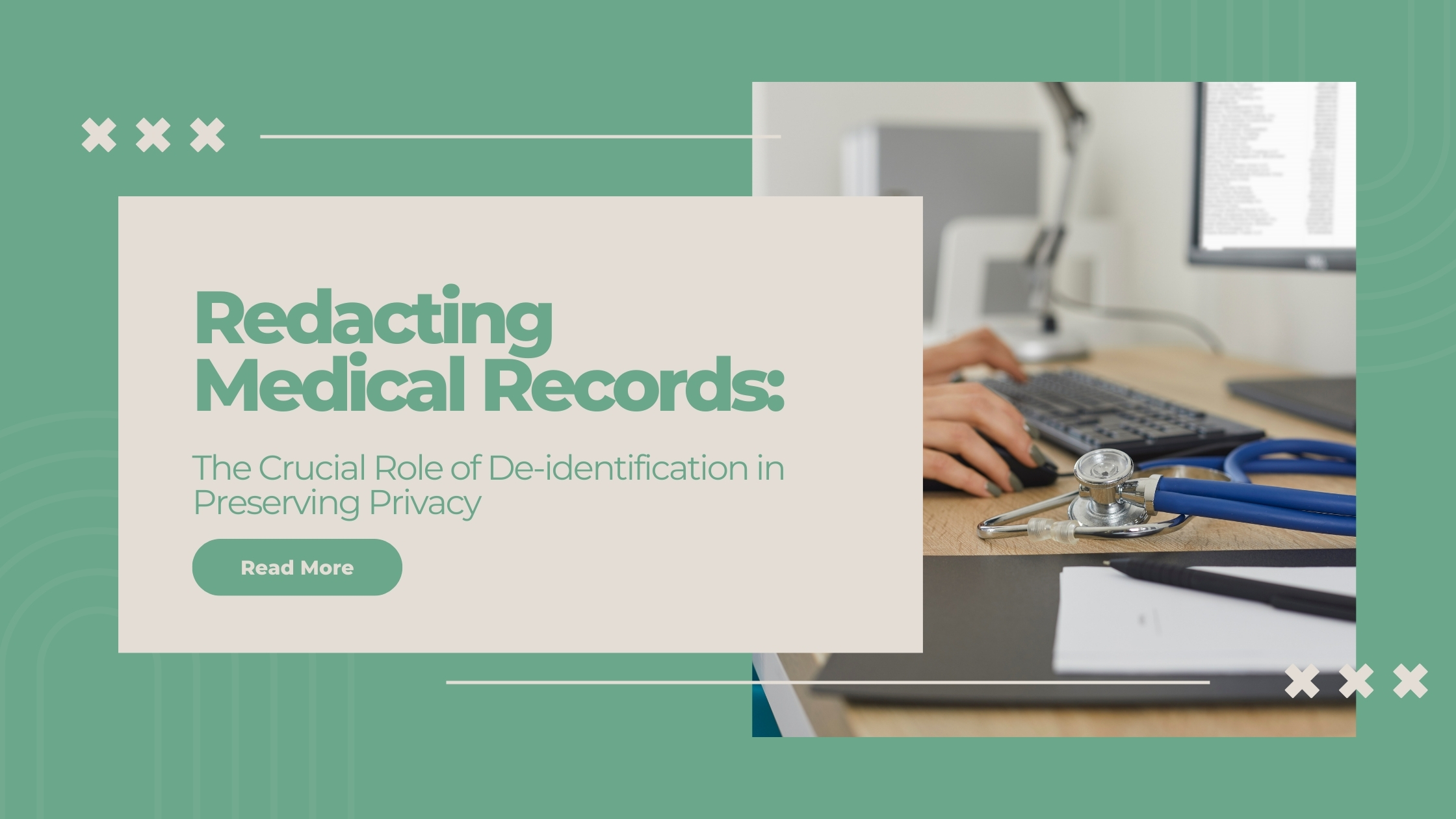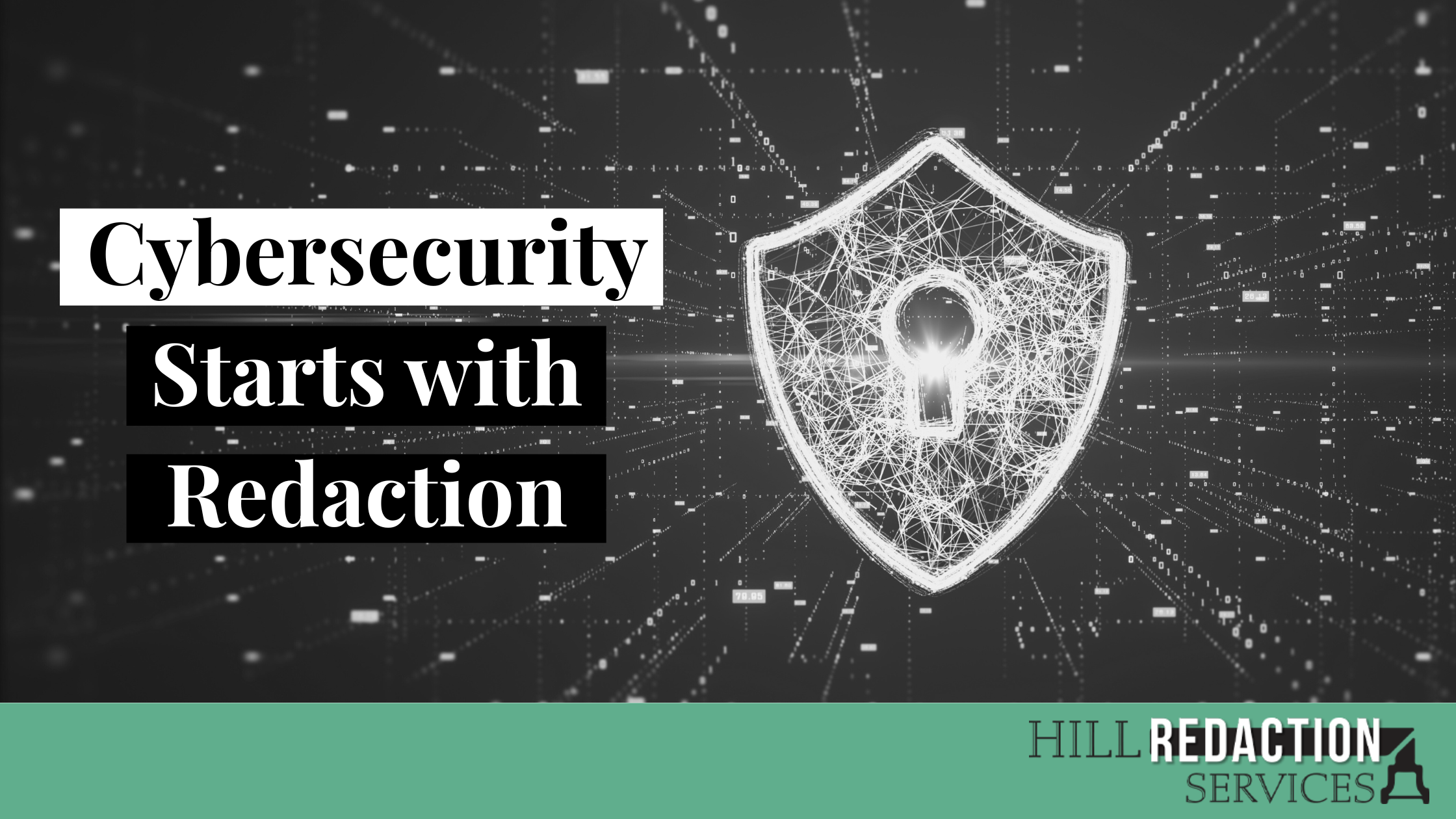
Redacting Medical Records: The Crucial Role of De-identification in Preserving Privacy
In today’s digital age, the healthcare sector is increasingly relying on data-driven strategies to enhance patient outcomes. This shift has made the management of medical records more critical than ever. Amidst these changes, the protection of patient privacy has emerged as a paramount concern, warranting the need for effective measures to keep sensitive information secure. One widely adopted method to address this issue is the de-identification of medical records. This procedure involves the systematic removal or obscuring of personally identifiable information, enabling healthcare entities to utilize valuable data while ensuring patient confidentiality and adhering to stringent privacy laws.
What Is De-identification
De-identification is a practice where personally identifiable information (PII) is removed or obscured from medical records, thereby ensuring patient privacy. This process is crucial in the modern healthcare landscape, where data forms the backbone of research, policy-making, and enhanced patient care. By de-identifying records, healthcare providers can share and utilize valuable patient data without violating confidentiality agreements or privacy laws.
For instance, consider a patient diagnosed with a rare disease. Their medical records contain highly sensitive information that could potentially lead to a breakthrough in understanding and treating the disease. However, disclosing this data could infringe on the patient’s privacy rights. To navigate this, the healthcare entity de-identifies the records, stripping away details like the patient’s name, address, and social security number while preserving essential information about the disease and its treatment. This anonymized data can then be shared with researchers, contributing to medical advancements while upholding patient privacy. Thus, de-identification strikes a balance between the need for comprehensive healthcare data and the equally important obligation to protect individual privacy. It’s a testament to the healthcare sector’s commitment to ethical data handling and respect for patient autonomy.
The HIPAA Privacy Rule and De-identification
The Health Insurance Portability and Accountability Act (HIPAA) Privacy Rule sets the standards for protecting patient health information. According to HIPAA, once data has been de-identified, covered entities can use or disclose it without any limitation. But is de-identification enough to ensure privacy? While it’s a crucial first step, some experts argue that it doesn’t guarantee complete anonymization. This is because certain data elements, when combined with other information, might still lead to patient re-identification.
Striking a Balance: Patient Privacy vs. Medical Advancements
While maintaining patient privacy is vital, there’s an inherent tension between safeguarding personal information and advancing medical research and treatment. De-identified data can enhance these areas by allowing researchers to analyze trends and patterns without compromising individual privacy. Thus, striking a balance between protecting privacy and promoting research is key.
The Process of De-identification
The process of de-identifying protected health information involves altering the data to remove any identifiers associated with an individual. This could include names, addresses, social security numbers, and more. However, ensuring this data is not re-identifiable, even when combined with other information, is a critical aspect of the process.
The Future of De-identification
As technology continues to evolve, the methods used for de-identification must also advance. Adequate de-identification is critical for health systems, payers, and other stakeholders to ensure HIPAA compliance. As data breaches become increasingly common, robust de-identification practices will be paramount in protecting patient privacy. In conclusion, the de-identification of medical records is an essential practice in healthcare aimed at preserving patient privacy while allowing for necessary research and advancements. While challenges exist, the evolution of de-identification strategies will continue to play a crucial role in the future of healthcare.
Related Posts

Redacting Medical Records: The Crucial Role of De-identification in Preserving Privacy
In today’s digital age, the healthcare sector is increasingly relying on data-driven strategies to enhance patient outcomes. This shift has made the management of medical records more critical than ever. Amidst these changes, the protection of patient privacy has emerged as a paramount concern, warranting the need for effective measures to keep sensitive information secure. One widely adopted method to address this issue is the de-identification of medical records. This procedure involves the systematic removal or obscuring of personally identifiable information, enabling healthcare entities to utilize valuable data while ensuring patient confidentiality and adhering to stringent privacy laws.
What Is De-identification
De-identification is a practice where personally identifiable information (PII) is removed or obscured from medical records, thereby ensuring patient privacy. This process is crucial in the modern healthcare landscape, where data forms the backbone of research, policy-making, and enhanced patient care. By de-identifying records, healthcare providers can share and utilize valuable patient data without violating confidentiality agreements or privacy laws.
For instance, consider a patient diagnosed with a rare disease. Their medical records contain highly sensitive information that could potentially lead to a breakthrough in understanding and treating the disease. However, disclosing this data could infringe on the patient’s privacy rights. To navigate this, the healthcare entity de-identifies the records, stripping away details like the patient’s name, address, and social security number while preserving essential information about the disease and its treatment. This anonymized data can then be shared with researchers, contributing to medical advancements while upholding patient privacy. Thus, de-identification strikes a balance between the need for comprehensive healthcare data and the equally important obligation to protect individual privacy. It’s a testament to the healthcare sector’s commitment to ethical data handling and respect for patient autonomy.
The HIPAA Privacy Rule and De-identification
The Health Insurance Portability and Accountability Act (HIPAA) Privacy Rule sets the standards for protecting patient health information. According to HIPAA, once data has been de-identified, covered entities can use or disclose it without any limitation. But is de-identification enough to ensure privacy? While it’s a crucial first step, some experts argue that it doesn’t guarantee complete anonymization. This is because certain data elements, when combined with other information, might still lead to patient re-identification.
Striking a Balance: Patient Privacy vs. Medical Advancements
While maintaining patient privacy is vital, there’s an inherent tension between safeguarding personal information and advancing medical research and treatment. De-identified data can enhance these areas by allowing researchers to analyze trends and patterns without compromising individual privacy. Thus, striking a balance between protecting privacy and promoting research is key.
The Process of De-identification
The process of de-identifying protected health information involves altering the data to remove any identifiers associated with an individual. This could include names, addresses, social security numbers, and more. However, ensuring this data is not re-identifiable, even when combined with other information, is a critical aspect of the process.
The Future of De-identification
As technology continues to evolve, the methods used for de-identification must also advance. Adequate de-identification is critical for health systems, payers, and other stakeholders to ensure HIPAA compliance. As data breaches become increasingly common, robust de-identification practices will be paramount in protecting patient privacy. In conclusion, the de-identification of medical records is an essential practice in healthcare aimed at preserving patient privacy while allowing for necessary research and advancements. While challenges exist, the evolution of de-identification strategies will continue to play a crucial role in the future of healthcare.





